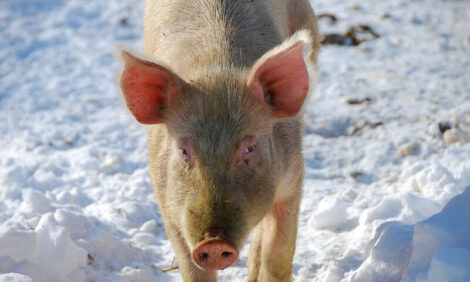



Weekly Overview: New Look at COOL Welcomed by US Farmers
ANALYSIS - The latest proposal to amend Country of Origin Labelling (COOL) has been welcomed by the farmers' association. Meanwhile, the lack of agreement over the Farm Bill will reduce the USDA budget. The German and US governments seem to be tightening up on antibiotics use.Changes have been proposed to the COOL labelling system in the US. US Department of Agriculture (USDA) has proposed modification to the rules required for the labelling of muscle cut commodities covered under the Country of Origin Labelling (COOL) programme.
Under the proposed rule, origin designations for animals slaughtered in the US would be required to specify the production steps of birth, raising and slaughter of the animal. In addition, this proposed rule would eliminate the allowance for any commingling of muscle cut covered commodities of different origins.
The changes are designed to provide consumers with more transparency by providing specific information about muscle cut covered commodities.
"USDA expects that these changes will improve the overall operation of the program and also bring the current mandatory COOL requirements into compliance with US international trade obligations," said Agriculture Secretary, Tom Vilsack.
The proposal follows a ruling by the World Trade Organization in June last year that the United States' COOL requirements for certain meat commodities discriminated against Canadian and Mexican livestock imports and thus were inconsistent with the WTO Agreement on Technical Barriers to Trade. The United States has until 23 May this year to come into compliance with the WTO ruling in COOL.
The National Farmers Union (NFU) was quick to hail the proposed changes to COOL rules.
"The proposed rule changes are an excellent response to decisions by the World Trade Organization that called for changes to our COOL implementation," said NFU President, Roger Johnson. "By requiring further clarity in labels and stronger record-keeping, the set of rules released today are a win-win for farmers, ranchers and consumers."
In February, NFU and other groups released a legal analysis that detailed the available options for successful US compliance of the WTO's ruling on COOL. The analysis concluded that an effective way of complying with the WTO decision was to provide more information and more accurate details to consumers. It would not require producers or processors to collect additional information; nor would it increase food cost to consumers as the Office of Management and Budget determined the changes are not economically significant.
The US Farm Bill will be tackled soon. House Speaker, John Boehner, was unable to report progress on the Bill to the Ohio Farm Bureau last week but he did pledge to get a new Farm Bill done and said he expected the Senate to do the same this year.
In the meantime, President Obama continues to seek a compromise to the latest US Congressional budget battle that will end the sweeping, across-the-board government spending cuts now taking effect.
Speaking at the 2013 Commodity Classic recently, Secretary Vilsack spoke to farmers and agribusiness attendees at the annual association meeting for corn, soybeans, wheat and sorghum to explain some of the consequences of the sequester taking effect.
He said the sequester will reduce USDA's operating budget by between $1.0 to $1.5 billion and every line item of the budget will be impacted. Every account that is not exempted by Congress has to be cut by a certain percentage.
Turning to the more general global matters, world agrifood prices are expected to be 11.5 per cent higher in 2050 than 2007 and this increase is driven by stronger global demand stemming from increasing incomes and population and resource constraints that are likely to affect productivity increases.
According to a report from the Australian Bureau of Agricultural and Resource Economics and Sciences (ABARES), with food security at the forefront of government policy agendas worldwide, much of the focus is on how the world will respond to a rise in food demand over the next 40 years.
Fish meal and oil, fish, meat, oilseed oils and cereals are forecast to experience the largest price rises over the projection period.
In the US and Germany, the respective governments are moving towards a further tightening of controls over the use of antibiotics in farm livestock.








